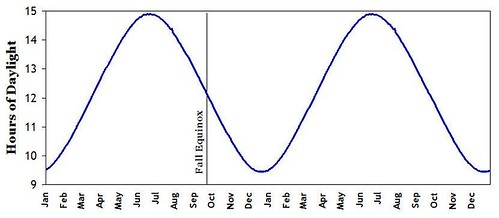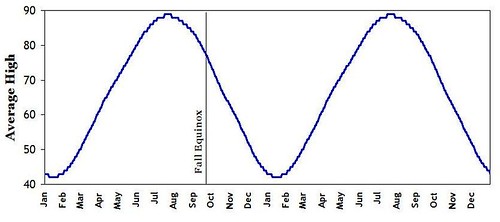Rather than dwelling on how depressing it is to have shorter and shorter days, we'd like to point out a cool pattern in nature. It turns out that day length is a lovely sine wave:

The times shown here are for the latitude of Washington, DC. As you move toward the equator, the curve flattens out; at the equator, days are about 12 hours long all year round. As you move toward the poles, the curve gets more extreme. Thus, the arctic circle's midnight sun in the summer and endless nights in the winter.
Temperatures follow a curve of a similar shape, but they're lagged behind daylight.

Because the earth has so much mass, it takes a while for the surface to cool off in the winter or warm up in the spring. So, even though we'll be back to having 12 hours of light by mid-March, we won't be back to average highs in the 70's until late April.
Ok, now we're depressed again. We'll just have to enjoy the symmetry of it all.


